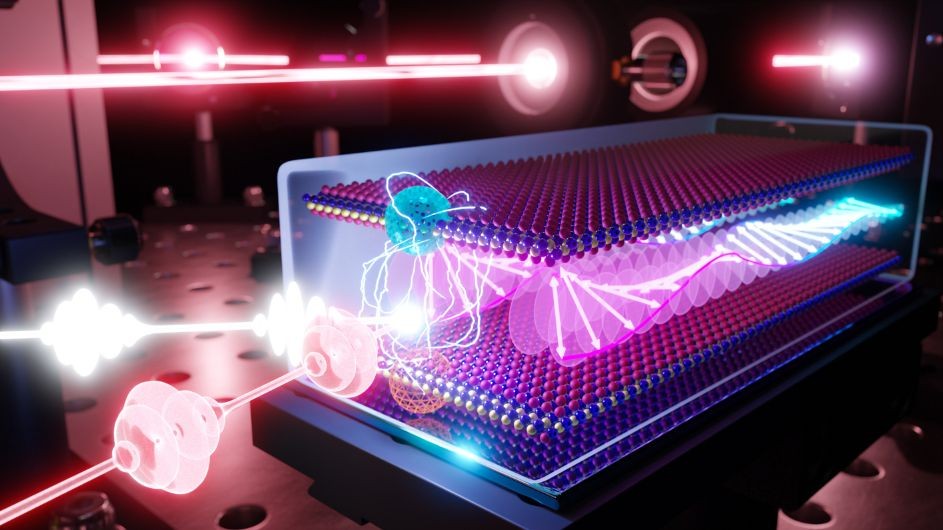All magnets - from souvenirs on the refrigerator and computer disks to powerful ones that are used in
Why is magnon movement so important?
The direction of rotation of one magnon can affectto the same motion of its neighbor, then to another particle, and so on. This process creates spin waves. Potentially, information can be transferred using spin waves more efficiently than using electricity. Magnons themselves can serve as quantum interconnects, which "glue" quantum bits together into powerful computers.
What is the problem?
Magnons have enormous potential, but theyoften difficult to detect without bulky laboratory equipment. Such installations are suitable for conducting experiments, but not for developing devices - for example, magnon devices and spintronics.
However, the observation of magnons can be simplified withwith suitable material. For example, a magnetic semiconductor - chromium bromide sulfide (CrSBr). It can be divided into atomically thin two-dimensional layers synthesized in the laboratory.
There is a solution
In a new study, employees fromColumbia, Washington and New York Universities, as well as the Oak Ridge National Laboratory, showed that magnons in CrSBr can form pairs with another quasiparticle - an exciton. Its peculiarity is that it emits light, which means that physicists will be able to "see" a rotating quasiparticle.
What have the scientists done?
By disturbing the magnons with light, they observed oscillationsfrom excitons in the near-infrared range, almost visible to the naked eye. In other words, for the first time, scientists observed magnons using a simple optical effect. The results can be thought of as quantum transduction, or the transformation of one energy quantum into another.
 The fusion of magnons and excitons will allow physicists to see the direction in which particles spin. This is important for several quantum applications. Credit: Chung-Jui Yu
The fusion of magnons and excitons will allow physicists to see the direction in which particles spin. This is important for several quantum applications. Credit: Chung-Jui Yu
Энергия экситонов на четыре порядка больше magnon energy. Now, as they connect, tiny changes in the magnons can be easily observed. One day, transduction will allow engineers to build quantum information networks (they get information from quantum bits based on rotation). Typically, the networks must be placed within millimeters of each other and convert it into light, a form of energy that can carry information hundreds of kilometers over fiber optics.
According to scientists, during the experiment they notedCoherence time is how long the oscillations can last. Thus, it lasted much longer than the planned five-nanosecond limit of the experiment. The phenomenon can extend over seven micrometers and persist even when CrSBr devices are made of just two atom-thick layers.
Where it leads?
All this simplifies the development of nanoscalespintronic devices. One day they will become an effective alternative to modern electronics. Unlike electrons in an electric current, which encounter resistance as they move, in a spin wave, no particles actually move.
What's next?
In the future, researchers will study the quantuminformation potential of CrSBr, as well as other candidate materials. For example, scientists can find magnon-exciton coupling in other kinds of magnetic semiconductors with slightly different properties than CrSBr. As a result, materials will be able to emit light in a wider range of colors.
Read more:
The ancient Vikings suffered from a dangerous disease. It is caused by a parasite from Africa
Plant on Mars produces oxygen at the rate of an average tree
The largest human organ was recreated in the laboratory. It is twice as strong as ours.
Cover photo: Argonne National Laboratory